The full history of the (photo) camera
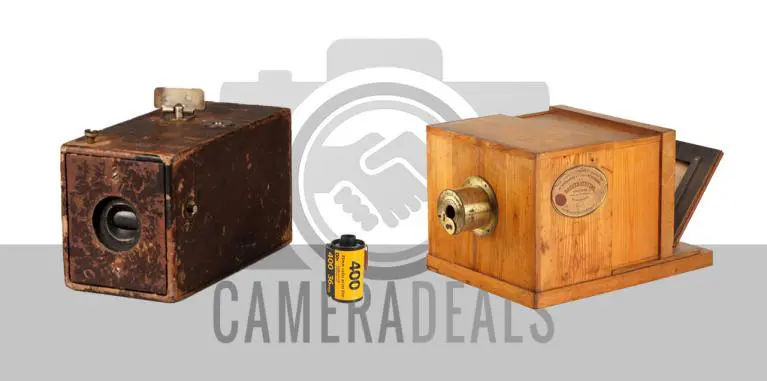
The photo camera; from large equipment that only specialists could operate, to cameras that sit in your pocket or can even maneuver through your body. The camera and photo camera have come a long way and are far from fully developed. In this article, we take a detailed look at the history of the camera and take a look into the future. Where does the (photo) camera go, and where does it come from?
Before we start with the history of the camera, first a little explanation about what a camera actually is.
What is a camera?
A camera is a device with a sensor, shutter, and lens that captures light and records light information. When you take a picture, the shutter (the curtain) opens for a short time to allow light to fall on the sensor. How much light and for how long this light enters depends on the camera settings. This is where terms such as aperture, shutter speed and, in digital photography, ISO come into play.
Take pictures with a classic film camera
When a classic film camera takes a picture, the film roll is briefly exposed to the light entering through the lens. The light burns on the emulsion and creates a ‘latent image’. That latent image can then be developed into a negative. This negative can then be projected onto light-sensitive photo paper to obtain a photo.
Take pictures with a digital camera
With a digital camera, the process works the same as with an analog camera, but the light is projected onto a digital sensor. Then the image processor helps to convert the light into a picture that we can see on the screen.
Also read: Camera specifications and functions explained
The first cameras: camera obscura (400 B.C – 1000 A.D)
In the intro text, we talk about cameras and photo cameras as two separate things. That’s because, looking at the history of the camera, they are also two different devices. The first camera we know of is the Camera Obscura. We can find descriptions of this in Chinese texts since 400 B.C. and also in the texts of Aristotle around 330 B.C. Around 1000 A.D., the concept of the camera obscura was described by the Arab scholar Ibn Al-Haytham.
Camera Obscura doesn’t take pictures, but it’s a way how light is passed through a lens (a small hole), and then projects the light onto a screen. A Pinhole camera is a good comparison to the camera obscura. This device is the forerunner of all cameras as we know them today. From photo cameras and cinema cameras to projectors.
Handheld Reflex Camera (1685 – 1816)
In 1685, the German writer Johann Zahn made a design that was called the Handheld Reflex camera. However, there was not a single person who built this camera. It was the French inventor Joseph Nicéphore Niépce who built a prototype in 1816.
The first still camera (1816)
For the first working photo camera, we have to go to the year 1816. According to many historians, it is the Frenchman Joseph Nicéphore Niépce who developed the first working photo camera.
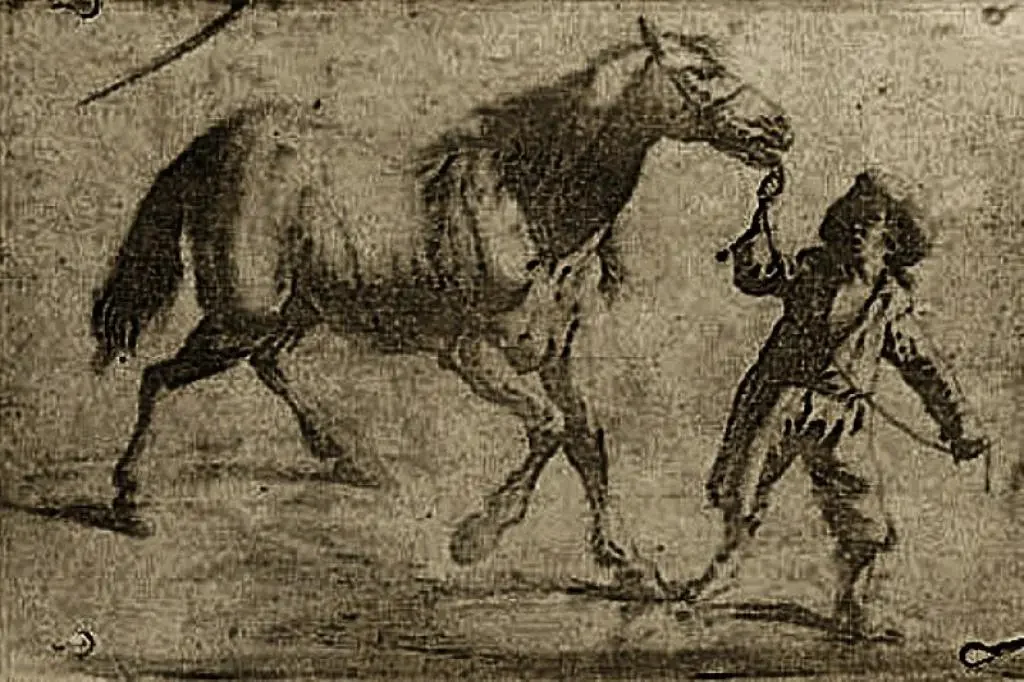
It is one of the first three photos ever. Ink is printed on paper to create a photograph. Made by Nicephore Niepce in 1825.
He managed to get photographic images on paper thanks to Silver Chloride. The oldest photograph that has been found so far dates from 1827 and can be seen at the University of Texas, Austin, United States.
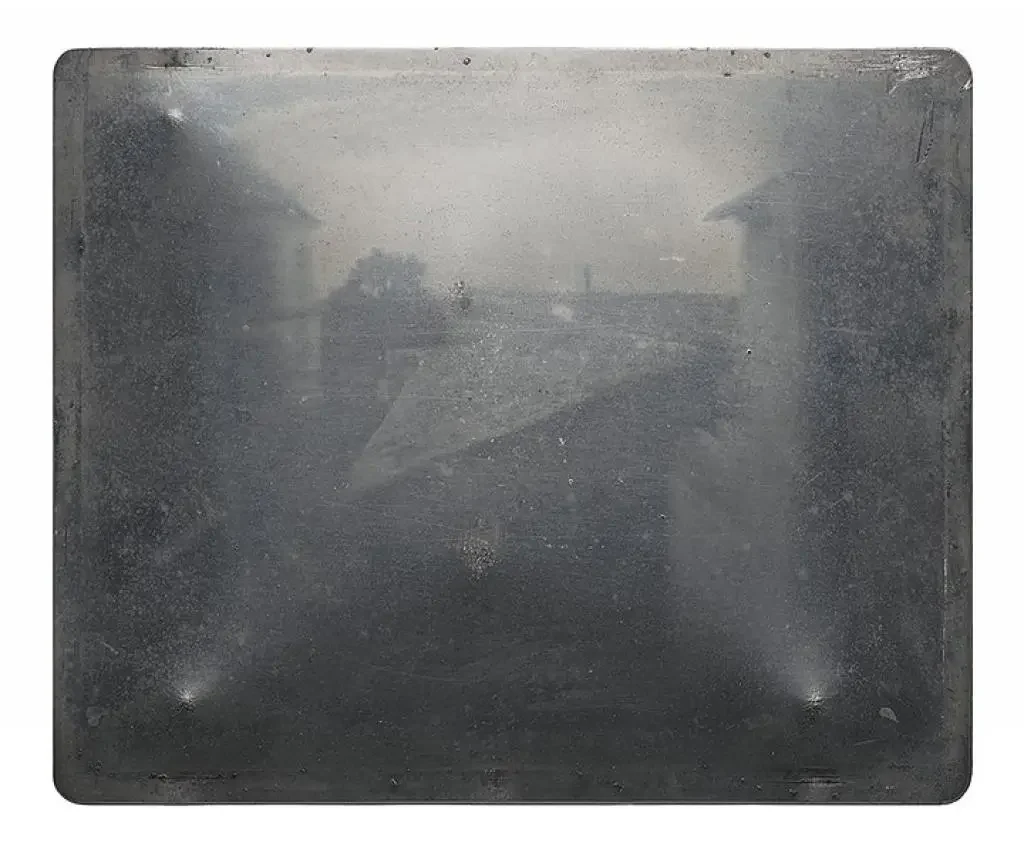
This is a Heliograph on tinplate and the very first (so far known) true printed photograph by Joseph Nicéphore Niépce in 1827.
Daguerreotypes (1829)
In the history of the camera, it was Louis Daguerre who developed the first practical photo camera in 1829. Taking pictures with his camera was easier and more commercially viable. The photos from this camera were called Daguerreotypes, where a copper plate with silver, iodine and hot mercury were used to make the image visible.
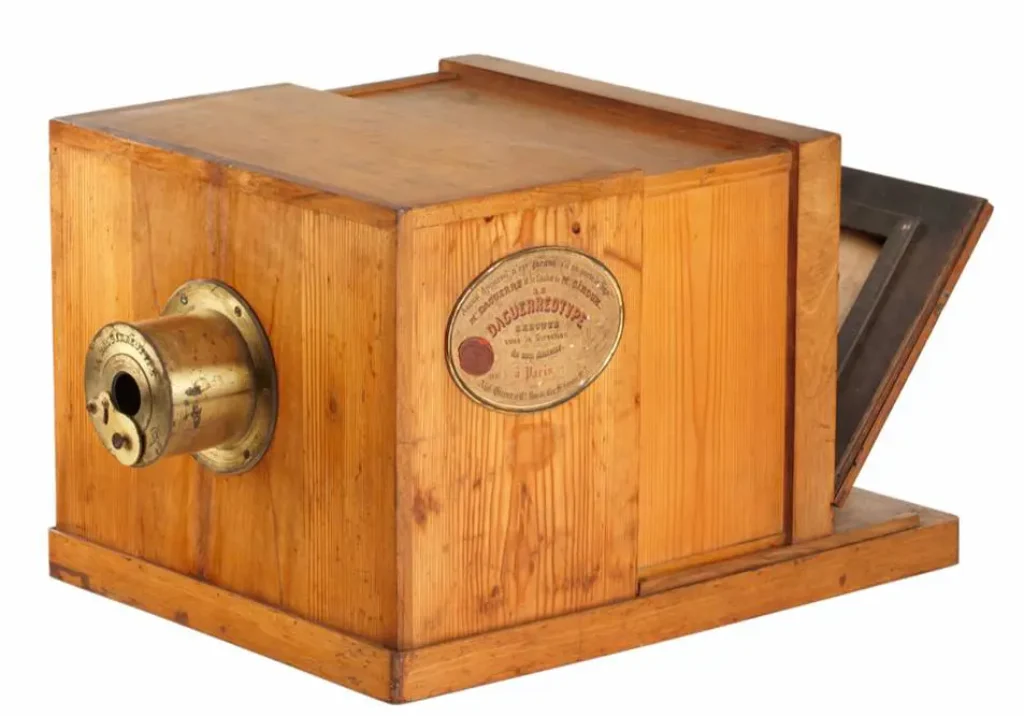
The Daguerreotype camera
Henry Fox Talbot’s calotype, a Daguerreotype variant, was also developed at this time.
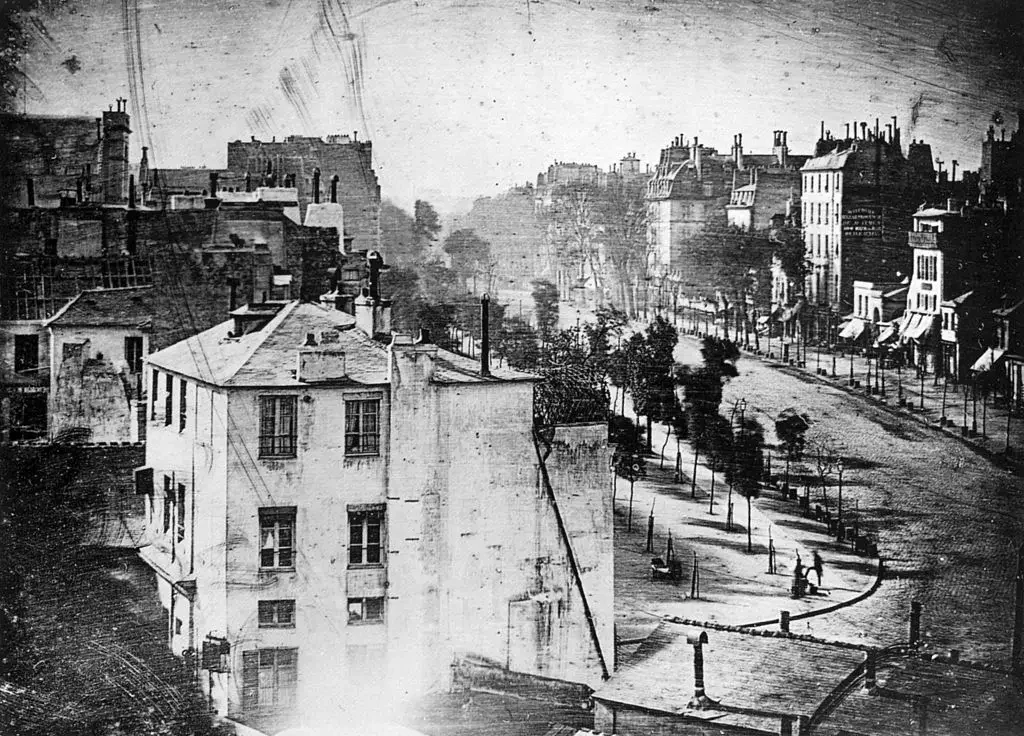
Daguerreotype photo with the first (known) photo ever to feature a human being.
The first single-lens reflex (SLR) camera (1840)
Although Daguerre was the first to develop a camera that was easy to use, but the pictures faded quickly. That is why it is also difficult to find images from that time that have survived. Alexander S. Wolcott from the United States found a solution to this by inventing the SLR camera.
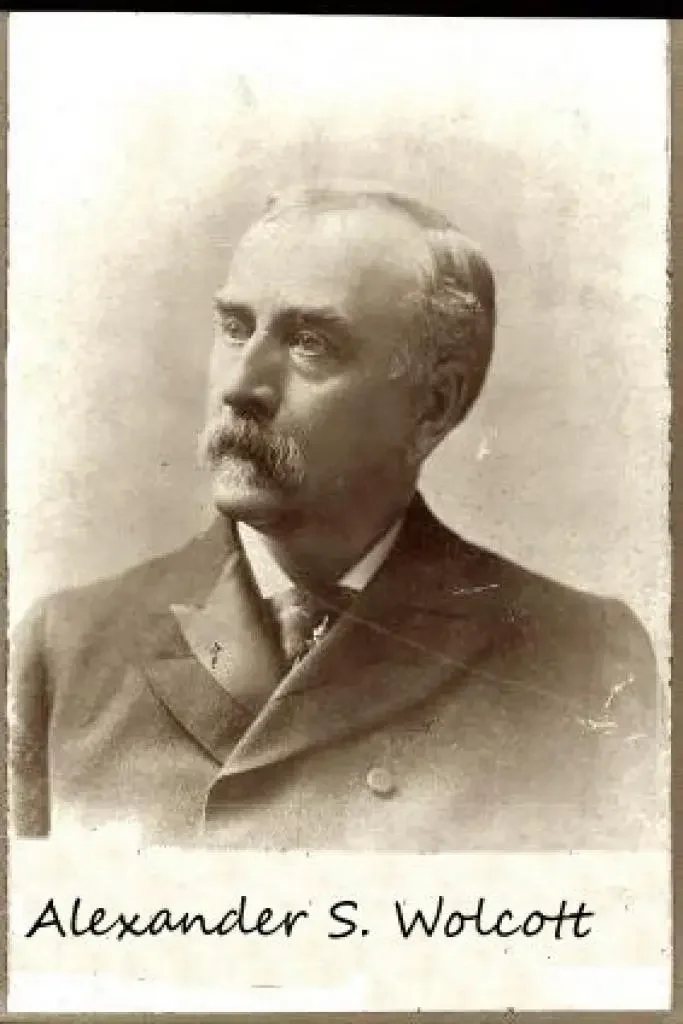
The difference here is that the camera developed a positive instead of a negative print. The camera with mirror was patented on May 8, 1840. Wolcott used Daguerre’s technology and later improved it.
The Instant Exposures (1871)
In 1871, it was Richard Leach Maddox who invented a gelatin dry plate that produced two direct exposures. This is the first version of the Polaroid as we know it today.
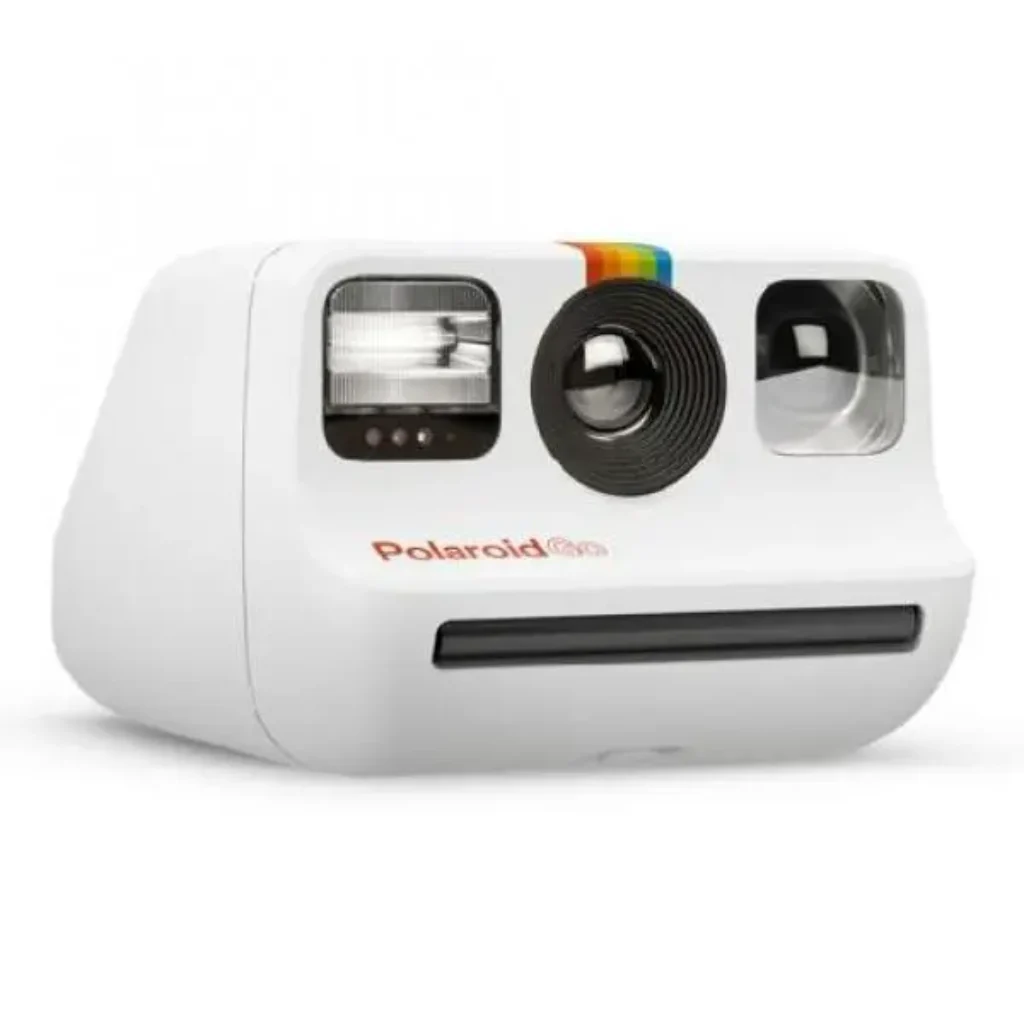
Polaroid Go instant camera
Instant photography has developed greatly. Thanks to the digital age, there are instant cameras that combine digital and analog. This allows you to take photos and print them later, or to connect the camera to another device. The photo paper has also been further developed. For example, there is Zero Ink (ZINK) paper, where the ink is already incorporated into the photo paper. This is often combined with the best instant cameras.
Kodak camera (1888)
Analogue photography was invented in 1888 by American George Eastman. He started with a paper roll, but soon moved on to celluloid. In 1888, he started selling a camera called Kodak. You could take a hundred pictures with each camera, and you had to send the entire camera back to the Eastman Kodak factory in Rochester, New York for development. In 1901, the Brownie camera was developed, a cheaper variant of the Kodak.
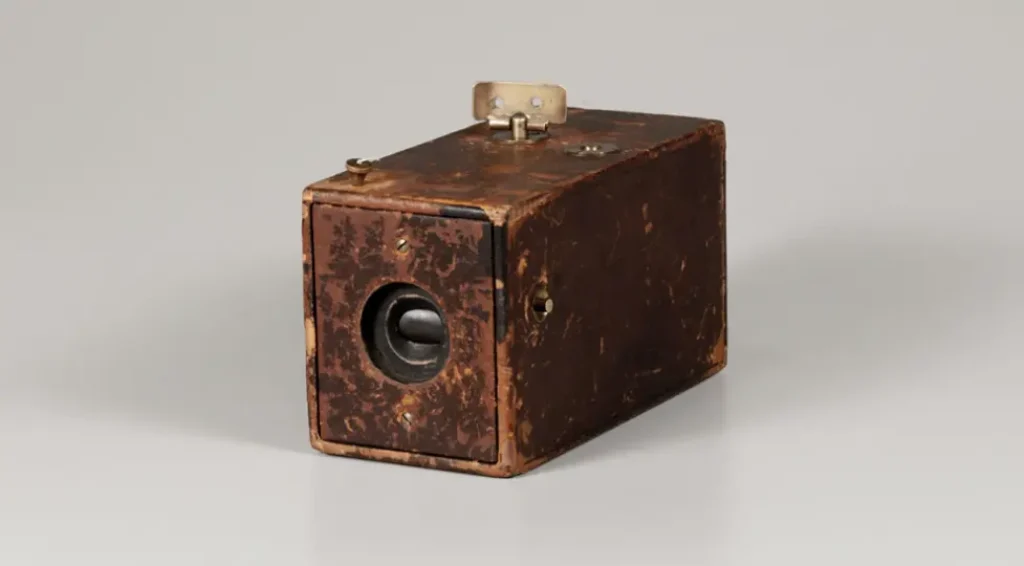
The original first Kodak camera.
35mm Film Camera (1905 – 1913)
The separate 35mm roll of film was invented between 1905 and 1913. This film roll could be removed from the camera and then put in a new one. German inventor and photographer Oskar Barnack usually gets the credit for this invention. The first film camera invented by him was the Leica, which he developed for the Leitz company. Not long after, Kodak became the largest company to supply rolls of film for 35mm cameras. Fujifilm also played a major role in this area shortly afterward.
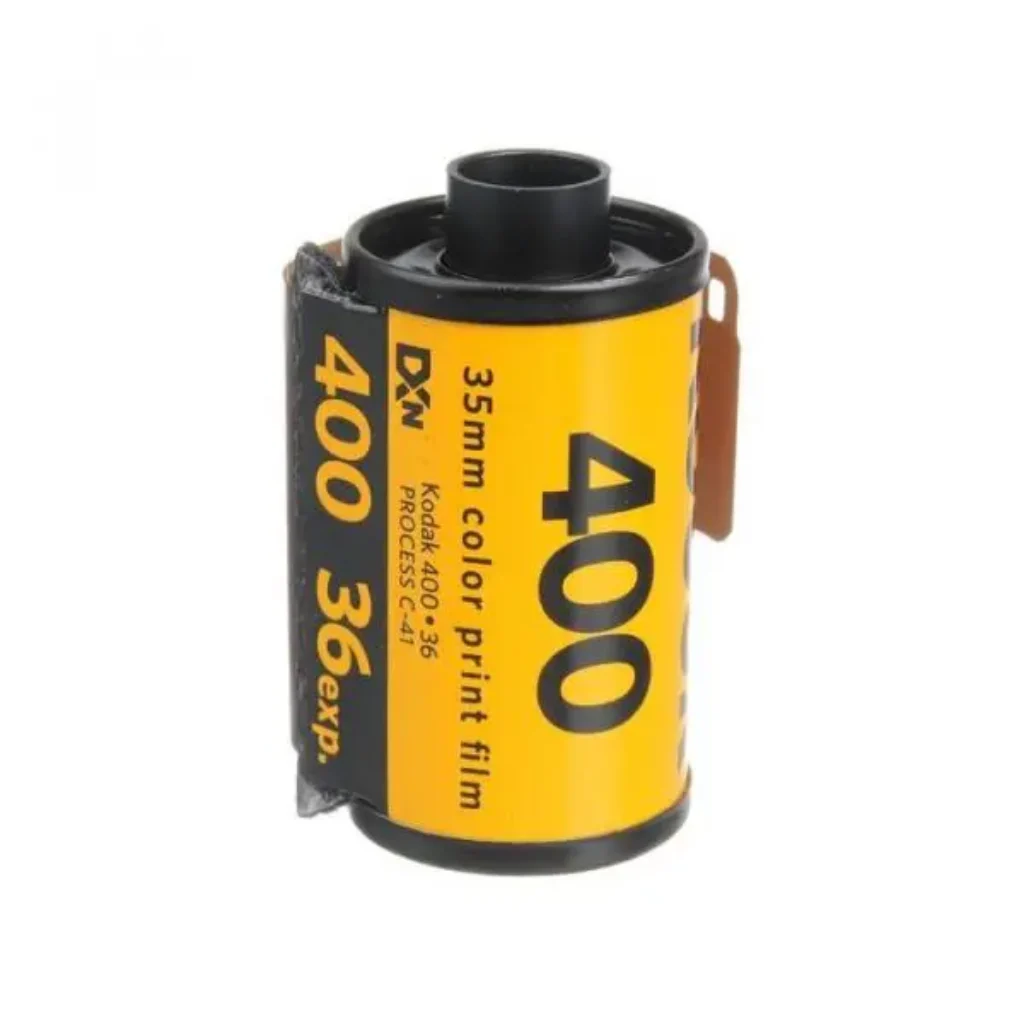
The Kodak 35mm roll of film
The Twin-Reflex camera (1920s)
Major strides were made with the Twin-reflex cameras. This introduced analog viewfinders, pentaprisms, adjustable shutter speeds and the ability to swap lenses. The first TLR (Twin-reflex camera) was sold by the German Franke & Heidecke in the 1920s. They didn’t last very long because they were soon replaced by the SLRs (Single-lens reflex cameras) or SLRs.
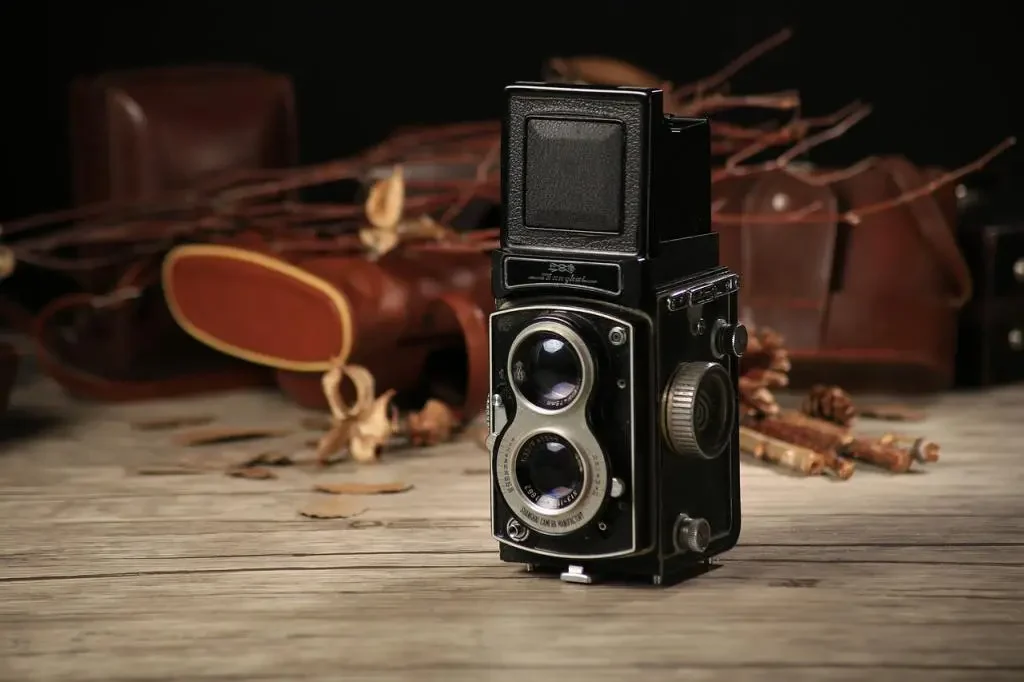
Twin Lens Reflex camera
Digital SLR Camera /DSLR – (1999)
We’re taking quite a leap in time because it wasn’t until 1999 that the first digital SLR (DSLR) camera came on the market. Not long after the release of this camera, it took over almost the entire market of analogue SLRs. Since the advent of the DSLR, it has evolved enormously.
The unique feature of an DSLR camera is that you immediately and exactly see what the lens sees. This is because the light entering through the lens is reflected through the pentaprism to the analog viewfinder.
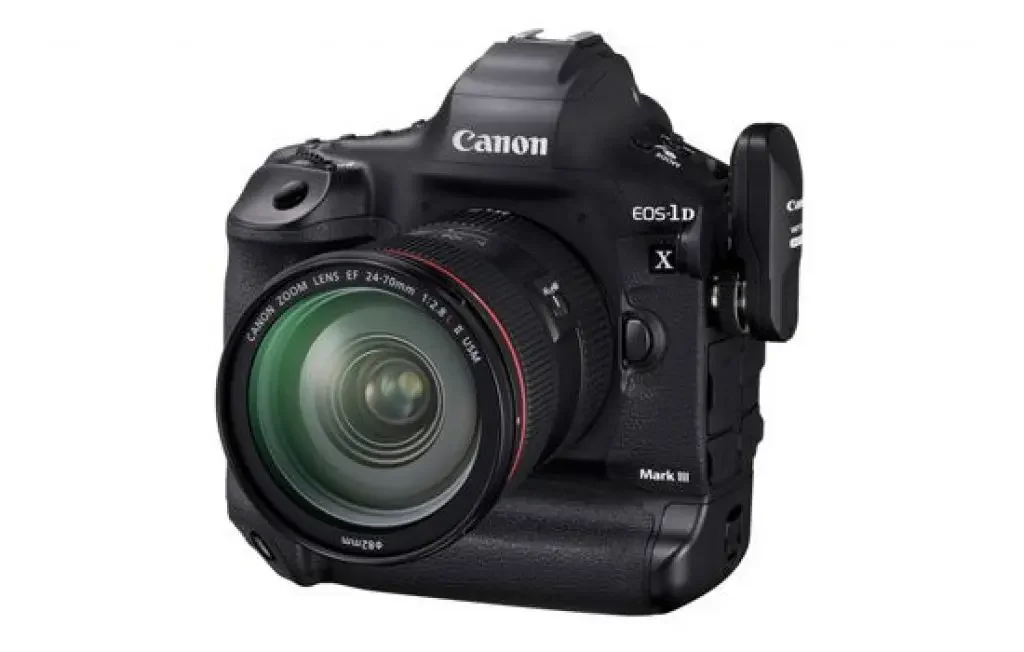
Canon EOS 1D X Mark III. Canon’s last single-lens reflex camera. New DSLRs are (almost) no longer being developed.
Where it used to be a pure photo camera, today it is a camera with which you can record high-quality videos and have complete control over your photography. This ensures that you do not miss what is happening in your frame and that it is easier to make a good crop.
The Mirrorless Camera (2004)
It was 2004 when Epson unveiled the first mirrorless camera. A camera that works without a mirror and is completely digital. The light passes directly through the lens to the sensor, where the captured light is converted by the image processor into a digital image and photograph. On the screen, you can see how the photo will look before you take the photo.
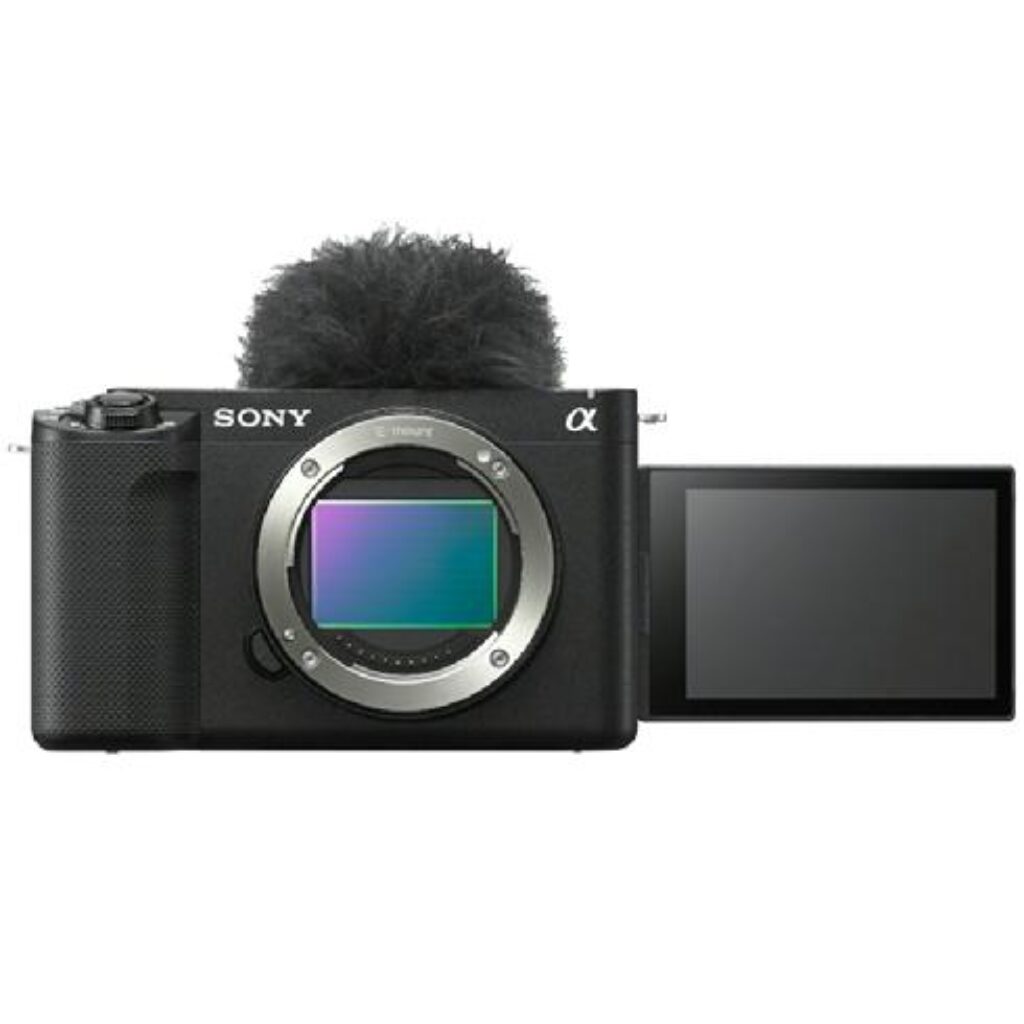
Sony ZV-E1 full frame mirrorless camera from 2023.
During the unveiling, the mirrorless camera was not meant to be a camera with interchangeable lenses (like a compact camera). Thanks to adjustments and major technological developments, you can now set all the settings yourself with a mirrorless camera, and they are the masters of photography and sometimes film. The best mirrorless cameras are often hybrid models made for high-end photography and cinematography.
The Phone Camera (2004)
The telephone camera was invented almost at the same time as the mirrorless camera. It was in 1999 that the Kyocera Visual Phone VP-210 was released in Japan. This ‘mobile videophone’ had a 110,000-pixel front camera and could take up to 20 JPEG photos, which you could send via email. Released in June 2000, the Samsung SCH-V200 featured a TFT Liguid-crystal display (LCD) and could store up to 20 photos of 350,000 pixels. We now know what the best camera phones can do, and you can even buy a good camera phone on a small budget.
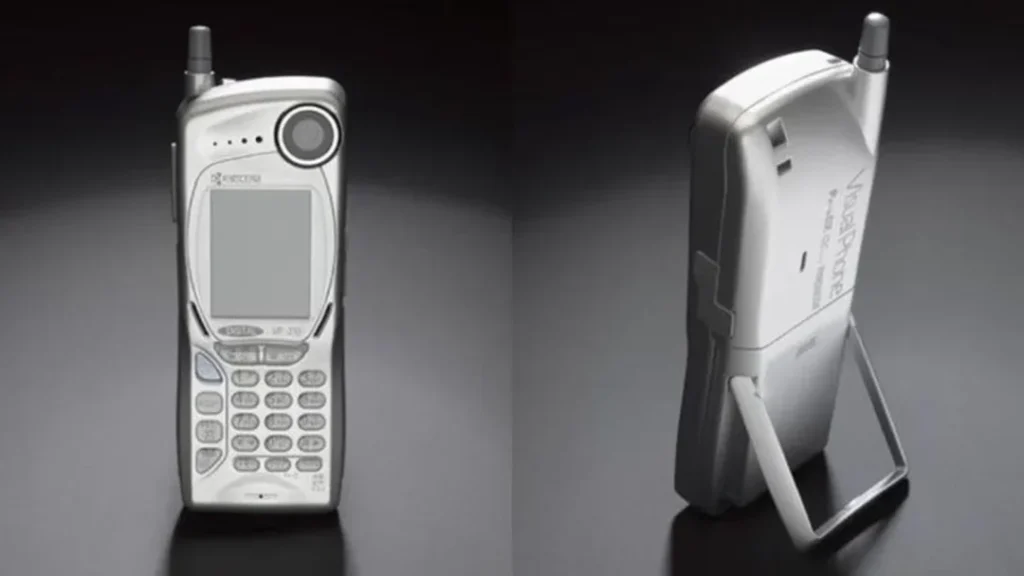
Kyocera VP 210, the first ever camera phone
The question is when telephone cameras will take over from conventional still cameras. Phone cameras have already supplanted compact cameras, especially now that phone cameras bring optical zoom. But, for now, it seems to stop there. Smartphone cameras are developing rapidly and using a lot of AI technology, but of course, the mirrorless camera, with larger sensors, will continue to develop in the same way.
The future of the camera
The first thing we see is that camera development is often slower than we can imagine. In movies, we see techniques that we will certainly see in consumer products, but for now, these are usually reserved for large, expensive and professional devices. We all expected hologram calling to be the ‘standard’ already, right?
Naturally, we can expect cameras to become more and more advanced in terms of sensor and image processor power and speed, megapixel count, and overall image quality. The smartphone camera has already disowned the compact camera and, thanks to AI technology, is sometimes better than certain good cheap mirrorless cameras.
We’ve seen tests with 3D cameras, and it flopped, even for the cinema world. Canon has introduced eye focus, where you only have to look at the object and then let the camera focus on it. While you’ll only find this feature in their high-end models, it will no doubt be found in every camera in a while.
New camera control
Controlling cameras with gestures or voice is nothing new and can already be found in camera phones, mirrorless and action cameras, among others. So, why shouldn’t taking a picture and adjusting settings also be possible via eye, voice, motion, or gesture control? That can and certainly will happen.
Infinite batteries
The battery of a camera becomes more and more powerful and eventually also smaller, which in turn leads to a lighter and smaller camera. We already have electric cars that never need to be charged, so why can’t we do that with batteries? From solar panels to a battery that charges through movement. It exists and will no doubt be placed in a camera or even a smartphone one day.
Smell images
We probably know it from cooking shows on television, where they say, “too bad you can’t smell it”. Currently, it is possible to smell the film by visiting a 4D movie in the cinema. But it may be that photography, rather than just vision, can also stimulate the idea of certain smells. Who knows, a real scent may be added, or we can respond to the scents we all know.
Cameras that don’t need light
Thanks to the adjustable ISO settings, we can now add extra light digitally. The camera that doesn’t need any light is on its way and will one day be able to take its sharp pictures. Nowadays, AI and self-learning techniques are also used for this technique.
We can, of course, continue to dream and think about what the camera can one day do. Think of a contact lens with a built-in camera. Blinking your eyes or even a thought that can take a picture. It doesn’t seem unlikely, but it seems far away. To find out what today’s cameras are technically capable of, take a look at our top list of the best cameras.
What is Camera Deals Online?

We at Camera Deals Online find the best video and photo camera, lens and drone and online prices for you. With us, you can find camera prices, top-lists and we write reviews and blogs with tips and camera information. In addition, we give you the latest news about cameras, smartphones, camera equipment, film, and the photography field. This way, we help you find and buy the best camera, lens, drone, gimbal and accessories. Our website is 100% independent.
Camera Deals Online exists thanks to you! When you buy a product through one of our links, we receive a small percentage of the total amount. This has no effect on the price of the product. Thank you!
News and recent posts












